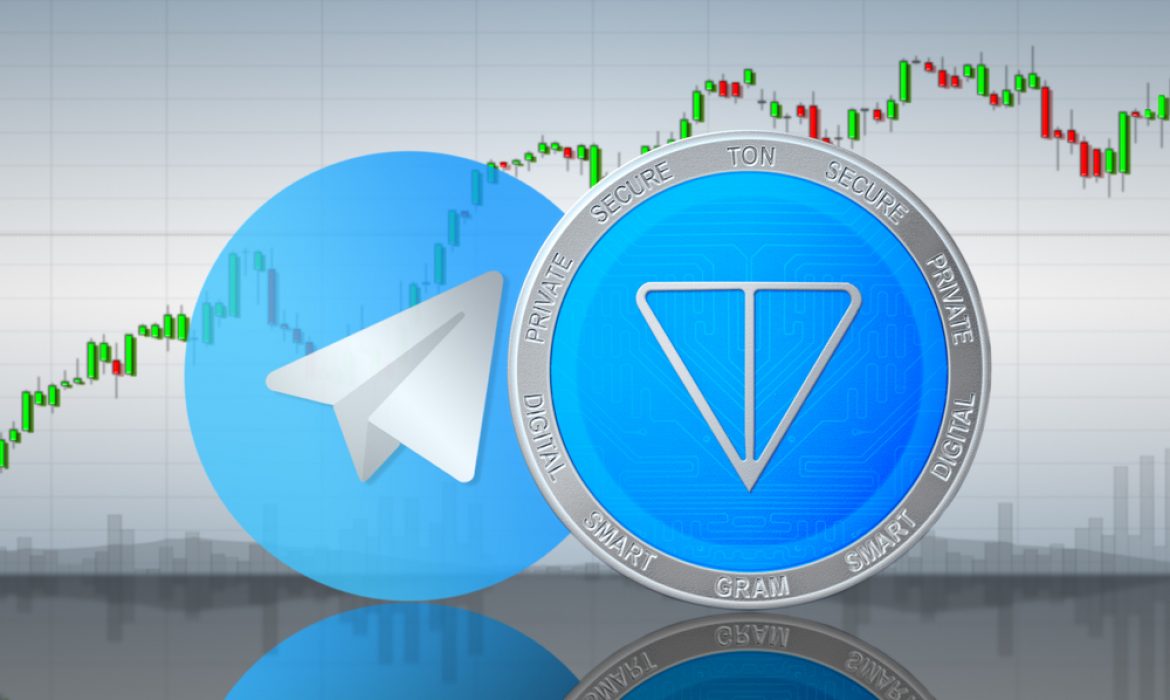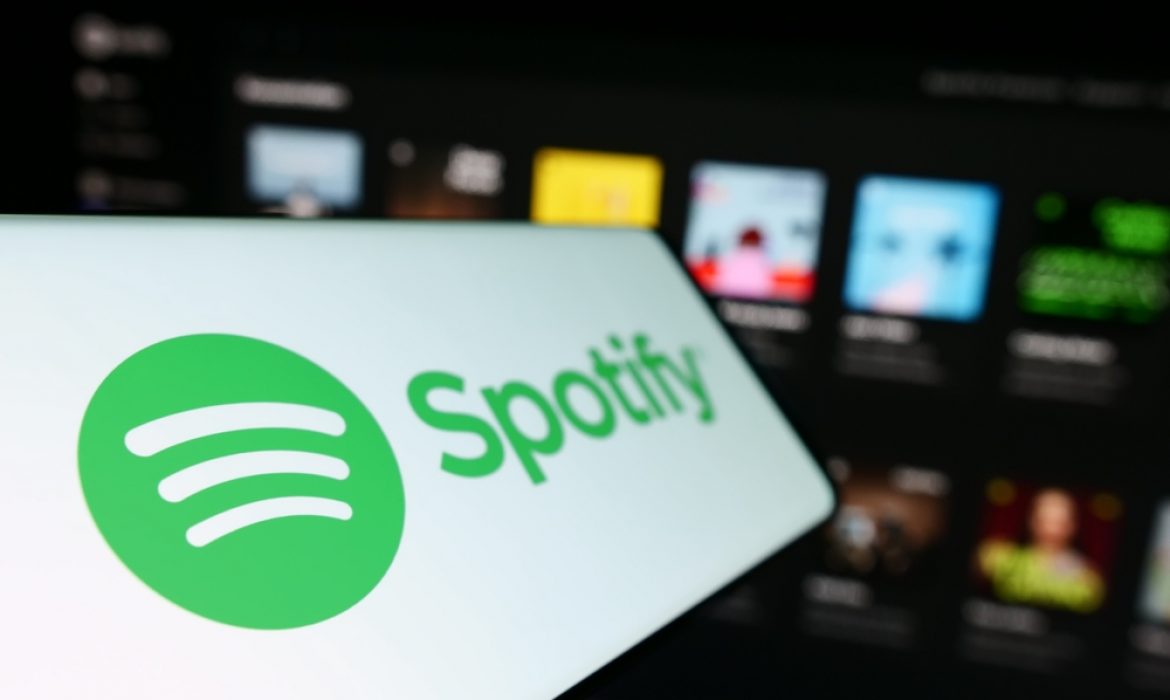Telegram’s ‘Gifts’ Feature Ignites Toncoin’s Soaring Surge to Top Cryptocurrency Ranks
Telegram, boasting a user base of over 700 million, has unveiled its latest feature, ‘Giveaways,’ a move poised to revolutionize transparent and authentic giveaway experiences within its channels. Aimed at channel promotion and subscriber engagement, the feature has not only attracted massive attention but has unexpectedly propelled Toncoin (TON) to new heights in the crypto market.
Toncoin’s value skyrocketed to an impressive valuation of over $9 billion, securing its position among the top ten cryptocurrencies, thanks to the fervor surrounding Telegram’s giveaways. Telegram’s CEO, Pavel Durov, added fuel to the fire by personally gifting TON worth $200,000 to 10,000 Telegram users, resulting in a remarkable 19.5% surge, reaching a recent high of $2.71.
Durov’s strategic move not only demonstrates his commitment to promoting TON within the Telegram ecosystem but also underscores the potential of Toncoin’s growth. The giveaways feature, coupled with Durov’s proactive involvement, has become a catalyst for Toncoin’s rapid ascent.
Telegram’s unwavering support, a user base of 700 million, and new regulatory approvals, such as the endorsement by the Dubai Financial Services Authority for TON and XRP, provide a robust foundation for Toncoin’s continued growth. This regulatory milestone signifies a crucial step forward, fostering positive sentiment around TON.
On October 31, TON achieved a groundbreaking milestone by operating its blockchain at a staggering 104,715 transactions per second, solidifying its status as the world’s fastest and most scalable blockchain. TON’s architecture allows it to handle an increasing number of transactions per second by adding more nodes, highlighting its technical superiority in the blockchain realm.
The convergence of Telegram’s innovative ‘Gifts’ feature, regulatory backing, and TON’s technological milestones positions Toncoin for further growth and innovation. As it continues to assert its dominance in the crypto space, the trajectory of Toncoin reflects not just its present success but the promise of a dynamic and evolving future.
Apple’s Global iPhone Revolution: Indian-Made Devices Set to Constitute Up to a Quarter of Shipments by 2024
In a strategic shift mirroring other major IT players, Apple is progressively relocating its smartphone production to India. Renowned analyst Ming-Chi Kuo anticipates that iPhones manufactured in India will make up 12% to 14% of the global shipments in 2023, with projections indicating a further surge in the coming year.
Under optimistic conditions, Kuo predicts a substantial leap, foreseeing Indian-made iPhones accounting for an impressive 20-25% of the global volume in 2024. This aligns with JPMorgan’s earlier forecast, suggesting that Apple could potentially shift a quarter of its total iPhone production to India by 2025.
Currently, Foxconn dominates 75% to 80% of iPhone production capacity in India. However, this landscape is expected to witness a shift when Indian conglomerate Tata Group commences iPhone production on Wistron’s assembly line.
In a groundbreaking move, Kuo predicts Apple’s initiation of mass production for the standard iPhone 17 in India. This marks a significant departure, representing the first time Apple will develop a new iPhone model outside of China. The choice of the standard iPhone, with its less complex design, aims to minimize design risks.
As the share of iPhone production in India grows, a corresponding decline in output from Chinese factories is anticipated. Kuo estimates a reduction in Foxconn’s production capacity in Zhengzhou and Taiyuan, China by 35-45% and 75-85% respectively by 2024.
Beyond manufacturing logistics, this expansion of iPhone production in India is seen as a strategic move to bolster Apple’s relationship with the Indian government. Kuo believes that such a maneuver will not only enhance future iPhone sales but will also positively impact the market for other Apple products in India.
Source: techcrunch
Starlink: From Liftoff to Breakeven – A Remarkable Journey to 2 Million Subscribers
SpaceX’s Starlink has achieved a remarkable milestone, breaking even just four years after its initial foray into the realm of satellite internet. Launched in May 2019, this ambitious project has since amassed an impressive fleet of over 5,000 spacecraft currently orbiting our planet, forming a formidable constellation of 12,000 satellites with the potential for further expansion to a staggering 42,000.
The journey of Starlink has been nothing short of extraordinary. SpaceX, led by the visionary Elon Musk, embarked on this ambitious mission to bridge the digital divide, bringing high-speed internet to the farthest reaches of the globe. The project’s rapid ascent to breaking even is a testament to its commitment to innovation and relentless pursuit of its mission.
With a constellation of 12,000 satellites already in orbit and plans for substantial growth on the horizon, Starlink is poised to revolutionize global internet access. The project’s dedication to reaching underserved and remote areas has garnered significant attention and support.
One of the most astounding projections is Starlink’s aim to reach 2 million subscribers worldwide by September 2023. This ambitious target underscores the project’s mission to connect people in areas with limited or no internet access, opening up new opportunities and expanding global connectivity.
Starlink’s journey from liftoff to breaking even is a testament to the power of innovative technology and the determination to overcome barriers. As the project continues to evolve, it holds the promise of reshaping the digital landscape, bringing the world closer together through enhanced connectivity and internet accessibility.
Bitcoin’s Spectacular October Surge: Climbs 28.5% in Second Best Month of 2023
Bitcoin, the pioneer of cryptocurrencies, showcased its enduring appeal as it recorded a staggering 28.5% surge in October. This extraordinary performance positions October as the second best month in 2023 for the world’s most renowned digital asset, marking a pivotal moment in the cryptocurrency market.
Bitcoin enthusiasts and investors witnessed the digital currency’s impressive ascent, positioning it as one of the top-performing assets in the financial realm for the month of October. This remarkable achievement reflects Bitcoin’s enduring resilience and ability to captivate the attention of both seasoned and novice investors.
Notably, this remarkable gain in October also etches it into the annals of Bitcoin history as the fifth best October in the cryptocurrency’s existence. Bitcoin has consistently defied expectations, navigating through market fluctuations and emerging stronger, making it a dominant force in the ever-evolving landscape of digital currencies.
In contrast, Ethereum, another significant player in the cryptocurrency ecosystem, experienced a more modest yet still notable 8.7% increase in value during the same period. While Bitcoin’s monumental gains in October have taken center stage, Ethereum’s growth signifies the continued appeal of cryptocurrencies as a whole.
As the cryptocurrency market continues to capture the attention of both retail and institutional investors, these substantial gains in October underscore the enduring allure and investment potential of digital assets. With Bitcoin’s remarkable surge and Ethereum’s steady rise, the world of cryptocurrencies remains a focal point of interest and potential for financial growth in the months to come.
Google’s Multibillion-Dollar Bet to Secure Default Search Dominance Unveiled in Antitrust Case
In a pivotal moment within the ongoing U.S. antitrust case against tech behemoth Google, Prabhakar Raghavan, Head of Google Search, has unveiled jaw-dropping figures that shed light on the company’s fervent quest for search engine supremacy in 2021. The search giant, in its resolute bid to maintain its dominant position in the search realm, astonishingly invested a staggering $26.3 billion, positioning itself as the default search engine on various high-profile platforms.
Revealed during the ongoing lawsuit, Google’s strategic allocation of this colossal sum aimed to secure default search privileges on a multitude of platforms. A substantial chunk of this investment, a whopping $18 billion, was channeled toward Apple, cementing Google’s status as the primary search engine on the Safari browser.
This disclosure came to light amid a spirited debate between the parties involved and Judge Amit Mehta, who consistently champions transparency in the trial proceedings. The U.S. Department of Justice has expressed apprehensions about Google’s mammoth financial outlay, deeming it an unfair tactic that places smaller competitors at a severe disadvantage while eroding competitiveness within the search engine landscape.
In a bid to underscore the magnitude of this substantial investment, Google’s parent company, Alphabet, revealed that its search advertising generated approximately $44 billion in the past three months and an astounding $165 billion over the last year. The broader advertising business, which encompasses revenue from YouTube ads, contributed nearly $90 billion to Google’s coffers.
This strategic maneuver, which necessitated significant financial commitments, saw Google willingly relinquishing 16% of its modern search revenue and a remarkable 29% of its profits in its relentless pursuit of securing default search dominance. As the antitrust case continues to unfold, the impact of Google’s financial juggernaut on the competitive landscape of the tech industry remains a pivotal point of contention, highlighting the enormous stakes at play.
Uber App to Offer Rides on Waymo Robotaxis in Phoenix, Marking a Milestone in Autonomous Transport
The Uber app is now poised to provide rides on Waymo robotaxis in Phoenix. This partnership heralds a significant shift in the ride-sharing industry, as Uber ventures into autonomous rides without human drivers for the first time, following the discontinuation of its own robotaxi project.
Starting this week, the Uber app is extending its services to encompass Waymo’s robotaxi fleet. Users in Phoenix can now opt for autonomous rides while booking in the UberX, Uber Green, Uber Comfort, or Uber Comfort Electric categories, provided the service area and vehicles are available. This transformative feature is expected to reshape the way passengers experience ride-sharing in the city.
Notably, the app will allow users to exercise their preference, offering the choice between human-driven or autonomous rides. Adjusting a few settings can prompt the app to prioritize robotaxis for users who wish to experience the future of transportation.
Much like traditional Uber rides, the fare for Waymo robotaxis will be determined upfront, offering transparency and predictability to users. Upon arrival of the autonomous vehicle, a unique button within the Uber app will allow passengers to unlock the car. Once inside, another tap will initiate the journey, reflecting the seamless integration of these innovative services.
Uber’s CEO, Dara Khosrowshahi, expressed his anticipation for the coexistence of human-driven and autonomous vehicles within the Uber platform. In a blog post, he stated, “Expect the number of human drivers and driverless cars on the Uber platform to grow side-by-side for a long time to come as we continue to scale a hybrid global network that connects both modes.”
While Waymo has been offering autonomous rides in Phoenix since 2020, its partnership with Uber is expected to expand the reach of these services and attract a more diverse customer base. Waymo currently conducts over 10,000 autonomous trips in the Phoenix metropolitan area on a weekly basis, making it a prominent player in the autonomous transportation sector.
Furthermore, Waymo’s recent permit to fully operate in San Francisco positions it to gain an edge over competitors. This development coincides with rival Cruise recently losing its permit due to a hit-and-run collision with a pedestrian, underscoring the importance of safety and reliability in the emerging field of autonomous transportation.
The integration of Waymo’s robotaxis into the Uber app not only signifies a major milestone in autonomous transport but also sets the stage for a new era in ride-sharing, where passengers can choose the future of mobility with just a few taps on their smartphones.
Broadcom’s $61 Billion Takeover of VMware Set to Make IT History as Deal Nears Completion
Broadcom is on the brink of finalizing its $61 billion acquisition of VMware, marking the third-largest deal in IT history, trailing only the Dell/EMC and Microsoft/ActiBlizz takeovers, which boasted $67 billion and $68.7 billion price tags, respectively.
Broadcom initiated the acquisition in May 2022, with a targeted completion date set for fiscal 2023. The semiconductor giant is set to fund the purchase using a 50/50 split of cash and its own shares. Under the agreement, VMware shareholders will receive $142.50 in cash or 0.2520 Broadcom shares for each VMware share, representing a substantial 44% premium over VMware’s share price as of May 20, when the deal was first reported. Moreover, it is 32% higher than VMware’s weighted average 30-day share price.
The combined value of the Broadcom and VMware deal, reportedly $69 billion when factoring in $8 billion of VMware debt that Broadcom will assume, underscores its significance in the tech world.
In a recent statement on October 30, Broadcom affirmed its commitment to finalize the agreement with VMware by the November 26 deadline. The statement aims to allay concerns of potential delays due to Chinese regulators’ scrutiny. While the EU, the UK, and numerous other countries have already granted regulatory approvals, the Chinese regulator’s green light is the final major obstacle.
However, the official stats don’t provide specific updates on the progress of obtaining Chinese regulatory approvals. Reports from earlier this month indicated that heightened U.S. sanctions on chip exports might prolong the Chinese approval process, causing VMware shares to dip below the offer.
The significance of this deal cannot be understated. Not only does it rank as the third-largest IT deal in history, but it also promises to transform Broadcom’s software business and bolster its position in the networking and storage markets. This acquisition underscores Broadcom’s aggressive acquisition strategy, as seen in past purchases, including CA Technologies for $18.9 billion in 2018 and the acquisition of Symantec’s business for $10.7 billion in 2019, followed by a resale to Accenture. Notably, Broadcom’s efforts to acquire rival Qualcomm were thwarted due to national security concerns. As the deal with VMware nears its final stages, the tech industry watches with bated breath to see how this acquisition will reshape the industry’s landscape.
Spotify Unveils New Royalty System, Targets Cheating and Noise Content in 2024
Spotify is preparing to implement three groundbreaking changes in early 2024, aiming to empower “working artists” and combat issues related to royalty leakage. The streaming giant’s latest move signifies a significant shift in its approach to monetization, focusing on fair compensation for musicians while battling fraudulent activities and noise content.
The first major change entails the introduction of a minimum stream threshold for tracks to qualify for royalty generation. Tracks must amass at least 200 streams per year before they become eligible for monetization, effectively putting an end to tracks that earn less than a mere 5 cents per month. Although these tracks constitute a tiny fraction of Spotify’s extensive music catalog, they still cost the platform tens of millions of dollars annually. This move is expected to redirect these resources towards mainstream artists, leaving obscure indie musicians with more challenging prospects.
Spotify’s second move involves the deployment of cutting-edge anti-fraud detection technology. This technology will actively identify and penalize illicit activities, such as the use of artificial intelligence tools to artificially inflate play counts. The company’s intention is clear – to maintain the integrity of the platform and ensure genuine plays are rewarded fairly.
The third change promises to have a profound impact on creators of “non-musical noise content,” including white noise and binaural beats. Currently, Spotify pays royalties for noise tracks as short as 31 seconds in duration. However, under the new system, noise tracks will be required to meet a different minimum duration before becoming eligible for royalties.
Notably, Spotify is contemplating more radical action concerning noise content. While noise creators may see a significant reduction in their income due to the new requirements, Spotify is also considering the complete removal of white noise content and the prohibition of future uploads in this category.
This ambitious overhaul of Spotify’s royalty system is set to transform the landscape for musicians and content creators, offering more equitable compensation for their work, curbing fraudulent practices, and redefining the platform’s approach to noise content. With these changes, Spotify is poised to pave the way for a more sustainable and inclusive streaming environment in the music industry.
Google Joins Tech Titans in Making India a Manufacturing Hub: Pixel 8 Series to Be Assembled Locally
Google has unveiled plans to manufacture Pixel series smartphones in India. Rick Osterloh, Google’s Senior Vice President of Devices and Services, announced the initiative at the company’s annual event in India. The production will include the highly anticipated Pixel 8 and Pixel 8 Pro devices, with the first locally assembled batch slated to hit the market next year.
“We are partnering with both international and domestic entities to locally manufacture Pixel smartphones. This marks the initial stride in our efforts to expand local manufacturing, catering to the rising demand for Pixel devices. More importantly, it underscores Google’s deepening commitment to India,” stated Osterloh.
Google’s move aligns with a broader trend in the tech industry, where companies are diversifying manufacturing away from China. India, with its proactive incentives and strategic initiatives, has become an attractive destination. Google’s recent collaboration with HP for manufacturing Chromebook laptops further solidified its manufacturing footprint in the country.
Notably, Google is not the sole tech titan aiming to transform India into a manufacturing nucleus. Samsung established the world’s largest smartphone factory in India five years ago, and Apple’s manufacturing partner, Foxconn, is investing heavily in infrastructure for iPhone and semiconductor chip production.
As New Delhi actively lures global corporations with financial incentives, the concept of “China + 1” gains traction, emphasizing the strategy to reduce reliance on Chinese manufacturing. Google’s decision marks a pivotal moment in India’s technological landscape, positioning the country as a pivotal manufacturing hub for some of the world’s most advanced devices.
Netflix Rides High Amid Subscriber Surge: Price Hike Follows 9 Million Q3 Additions
Netflix has raised its subscription prices, aiming to capitalize on its recent successes. The streaming giant added a whopping 9 million subscribers in the third quarter, a feat attributed in part to its ongoing battle against password sharing, which has now prompted a price adjustment.
In the U.S., basic subscribers will see a $2 increase, bringing their monthly bill to $11.99, while premium subscriptions will go up by $3 to $22.99. Similarly, in the UK, basic plans will cost an extra £1 at £7.99, and premium subscriptions will rise by £2 to £17.99. This bold move, typically favored by investors, led to a 12% boost in the company’s share price.
Despite last year’s slowdown in subscriber growth, Netflix’s Q3 earnings of $3.75 per share exceeded Wall Street forecasts of $3.52. The company now boasts 247 million subscribers, a notable 11% increase from the previous year.
Netflix’s surge is also attributed to its strategic acquisition of older shows from rival studios, many of which ceased selling content to Netflix after launching their own streaming services. Titles like ‘Suits,’ licensed by NBCUniversal, became global hits, amassing 1 billion viewing hours worldwide on Netflix.
However, Netflix did acknowledge the challenges posed by the recent Hollywood strikes, which led to a significant reduction in new content investment, amounting to $1 billion. Despite this, Netflix’s global approach, with over 70% of subscribers residing outside the United States, mitigated the impact of these strikes. Notably, 4 million of the new subscribers were from Europe, the Middle East, and Africa.
Looking ahead, Netflix remains optimistic, expecting content spending to reach $13 billion in 2023. If the actors’ strike concludes in the near future, the company anticipates an increase in content spending, projecting a substantial $17 billion investment in content for 2024.











